The feeling is all too familiar. A phantom buzz in your pocket. An unconscious reach for your phone the second you have a spare moment. The endless scroll through a world of curated perfection and chaotic news, leaving you feeling more anxious and disconnected than ever. It’s this exact feeling that makes the idea of a digital detox so necessary.
If you’ve ever felt like your own mind is just another feed you can’t turn off, you’re not alone. The digital world, designed to connect us, has become a primary source of our modern chaos.
The standard advice is often a dramatic “digital detox” – a weekend away in a cabin with no signal, a grand announcement that you’re quitting social media forever. But let’s be honest. For most of us, that’s not realistic. Our lives, jobs, and families are woven into these tools.
So, how do we find our centre when the source of the storm is in our own hands? It’s a question we explored when we looked at how to stay calm during the chaos of world events, and the principle is the same here.
This isn’t a guide about abandoning technology. It’s a realist’s guide to taming it. It’s about shifting from being a mindless consumer to an intentional user. It’s about finding calm, not by deleting everything, but by creating space.
Why the "All-or-Nothing" Detox Fails
The grand declaration to quit often backfires. A few days of digital silence can feel great, but we return to a flood of notifications and the same old habits. It’s like a crash diet – the results rarely last because the underlying lifestyle hasn’t changed.
The real goal isn’t a temporary escape. It’s to build a sustainable, healthier relationship with your digital life. Here’s how to start.
The 5-Step Realist's Digital Detox
Forget the cabin in the woods. These are small, intentional changes you can make today to reclaim your peace and focus.
Step 1: The No-Judgment Audit

Before you change anything, you need to know what you’re dealing with. For one day, just observe.
- Check Your Screen Time: Go into your phone’s settings (Screen Time on iPhone, Digital Wellbeing on Android). Don’t judge the number; just acknowledge it. Which apps are eating up the most time?
- Notice Your Triggers: When do you instinctively reach for your phone? Is it when you’re bored? Stressed? Waiting in line? This awareness is the first step toward regaining control.
Step 2: Prune Your Notifications
This is the single most effective change you can make, and it takes five minutes. Your phone is constantly yelling for your attention. It’s time to teach it some manners.
Go to your notification settings and be ruthless. Turn off all notifications except for the essentials.
- KEEP: Phone calls, text messages from actual people, and calendar alerts.
- TURN OFF: Breaking news banners, social media likes, comments, game alerts, and promotional pop-ups from shopping apps.
You’re not missing out. You’re just choosing to check in on your own terms. The world will still be there when you decide to look.
Step 3: Create "No-Phone Zones & Times"

Your brain needs space to unwind without a screen in front of it. Create sacred spaces where your phone simply isn’t allowed.
- The Dinner Table: Make mealtime a time for food and conversation, not scrolling.
- The First 30 Minutes of Your Day: Don’t let email or social media be the first thing that enters your brain. Stretch, look out the window, make coffee, or just sit in silence.
- The Bedroom: This is the most important one. Your bedroom should be a sanctuary for rest. Buy a cheap alarm clock and charge your phone in another room. The blue light from your screen disrupts sleep, and the endless scroll fuels anxiety right when you should be powering down.
Step 4: Swap the Scroll for Something Else
A habit is hard to break, but it’s easier to replace. When you feel the urge to scroll, have a pre-planned alternative. It doesn’t have to be monumental.
- If you have 5 minutes, read two pages of a book.
- If you have 10 minutes, listen to one song without doing anything else.
- If you have 1 minute, do a few simple stretches or take three deep breaths.
The goal is to break the muscle memory of reaching for your phone and replace it with a small act of peace.
Step 5: Schedule Your "Chaos Time"
You don’t need to quit social media or news. You just need to contain it. Instead of dipping in and out all day long, set aside specific, limited times to engage.
For example, decide you’ll check Instagram for 15 minutes after lunch and read the news for 20 minutes after work. By scheduling it, you transform it from a reactive habit into an intentional action. You are now in control of the chaos, not the other way around.
Finding the Joy of Missing Out (JOMO)
At first, this will feel strange. You might feel bored or a little bit anxious – that’s the “detox” part. But lean into that feeling. That boredom is where your own thoughts have room to breathe. It’s where creativity and self-reflection are born.
This realistic digital detox isn’t about becoming a Luddite. It’s about finding your centre in a world that is constantly trying to pull you away from it. It’s about using technology as the tool it was meant to be, so you can get back to the most important thing: living your life.
What’s one small change you’re willing to try this week? Share your thoughts in the comments below. Let’s find our calm together.




